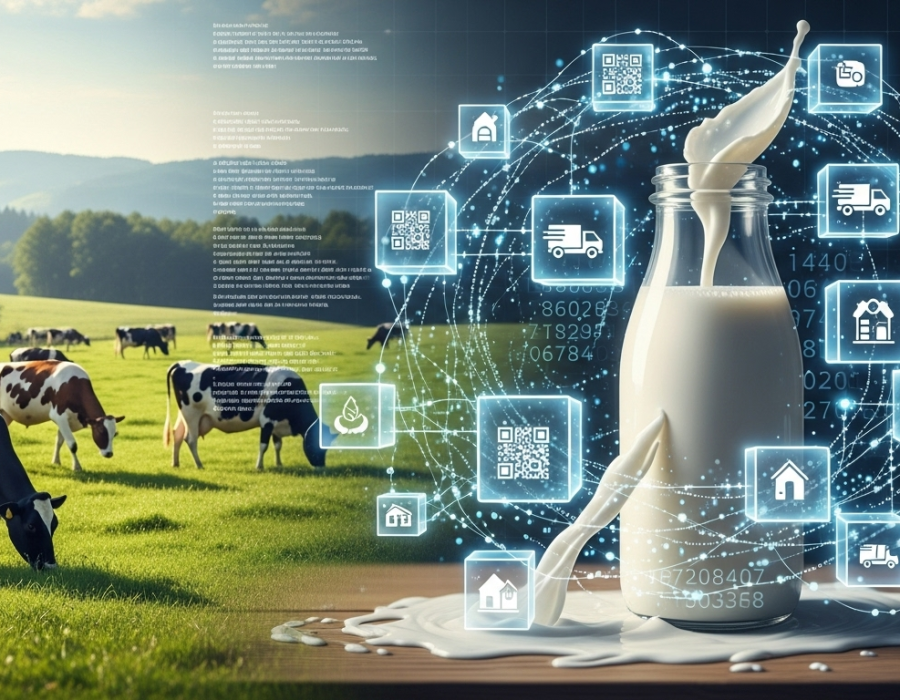Introduction
The global dairy market is booming—valued at $871 billion in 2022 and expected to exceed $1.2 trillion by 2030 (Statista). Yet, alongside this growth comes a pressing problem: food fraud, adulteration, and lack of transparency. According to the Food and Agriculture Organization (FAO), milk is one of the most adulterated foods worldwide, with cases involving water, detergents, and even starch mixed into raw milk. This threatens both safety and consumer trust.
Here’s where dairy tokenization offers a breakthrough solution. By combining blockchain and asset tokenization, every step of milk’s journey—from farm to fridge—can be tracked, recorded, and verified. Blockchain-enabled systems can reduce food fraud by up to 50% and improve traceability by 60% (Deloitte), making dairy tokenization a game-changer for ensuring authenticity, transparency, and confidence in what consumers drink.
What is Asset Tokenization?
Asset tokenization refers to the process of converting ownership or rights of a physical asset into digital tokens stored on a blockchain. These tokens act as secure, tamper-proof digital records that can be easily tracked.
In real estate or finance, tokenization allows fractional ownership. In supply chains, it ensures end-to-end transparency.
For dairy, it means each liter of milk or carton of cheese can carry a unique token that documents:
- Cow health and feed details
- Milking time and storage conditions
- Processing and packaging steps
- Transportation to retailers
Once on blockchain, this information cannot be altered, ensuring trust and traceability for all stakeholders.
What is Dairy Tokenization?
Dairy tokenization applies asset tokenization directly to the dairy supply chain. Every product unit is digitally linked to an immutable token that tracks its full journey.
For example:
- A consumer in New York scans a QR code on a milk carton.
- Instantly, they see the cow’s farm location, the date of milking, pasteurization records, and shipping details.
- This builds confidence that their product is safe, authentic, and ethically sourced.
With food fraud costing the global economy $40 billion annually (PwC), dairy tokenization offers a robust solution to restore trust.
Why Dairy Tokenization Matters
1. Transparency
Traditional supply chains often hide information. Dairy tokenization ensures full transparency, giving both regulators and consumers instant access to real-time data.
2. Safety
By storing milk production details on blockchain, contamination sources can be traced in seconds, reducing risks of mass recalls.
3. Consumer Confidence
Shoppers today want more than just milk—they want assurance of quality, sustainability, and authenticity. Tokenization delivers exactly that.
4. Fraud Prevention
With immutable blockchain records, adulteration becomes nearly impossible, safeguarding the reputation of dairy brands.
5. Compliance
Global food safety standards are tightening. Tokenization simplifies audits by providing ready-to-access digital records.
Dairy Tokenization in Action
Big dairy players are already testing this technology:
- Nestlé piloted blockchain in New Zealand to track milk supply and in China to ensure baby formula safety.
- Arla Foods, one of Europe’s largest cooperatives, is exploring blockchain-based dairy traceability.
- VeChain has partnered with food producers to enhance dairy product transparency in Asia.
These examples prove that dairy tokenization isn’t just futuristic—it’s already reshaping supply chains today.
Dairy Tokenization vs Traditional Supply Chains
FeatureTraditional Supply ChainTokenized Dairy Supply ChainTransparencyLow, paper-basedHigh, blockchain-backedSafety TrackingSlow & manualInstant, automatedFraud RiskHigh (adulteration, mislabeling)Very low (immutable records)Consumer TrustBased on brand promisesBuilt on verifiable data
Clearly, tokenization provides a safer, smarter, and more trustworthy alternative.
Final Thoughts
Dairy tokenization is not just a technological buzzword—it’s a revolution for transparency, safety, and consumer confidence. By applying asset tokenization to the dairy industry, companies can eliminate fraud, strengthen compliance, and give consumers what they increasingly demand: proof of authenticity.
With global dairy demand expected to grow by 30% by 2030 (OECD-FAO), embracing blockchain and tokenization isn’t optional—it’s essential. From farm to consumer, dairy tokenization ensures that every drop of milk is safe, transparent, and trustworthy.





Comments